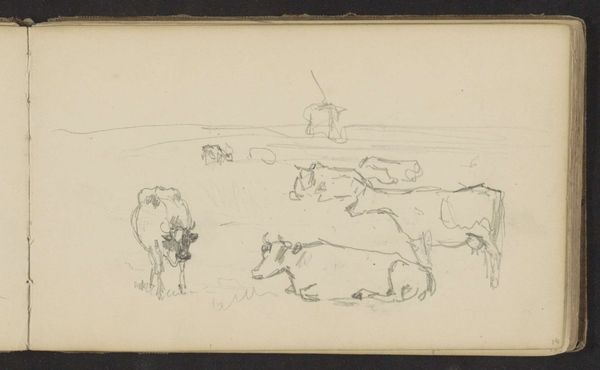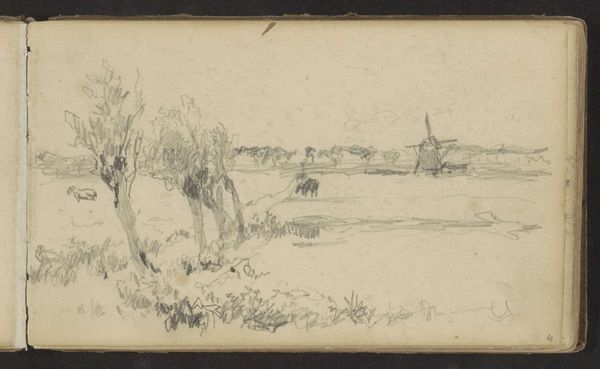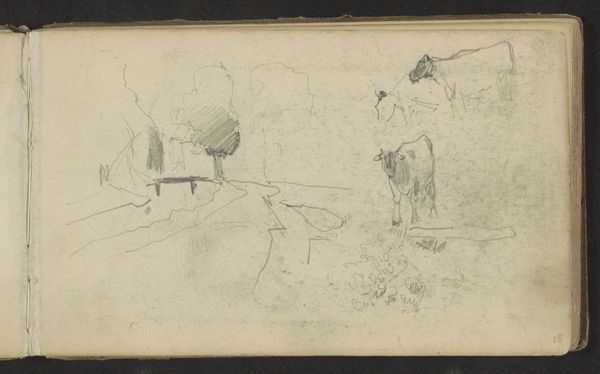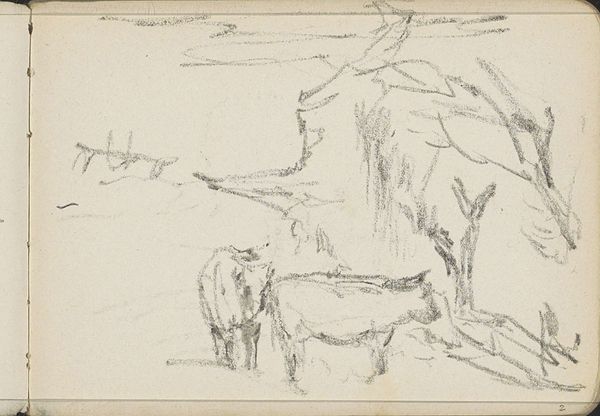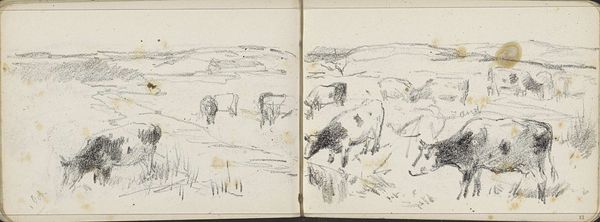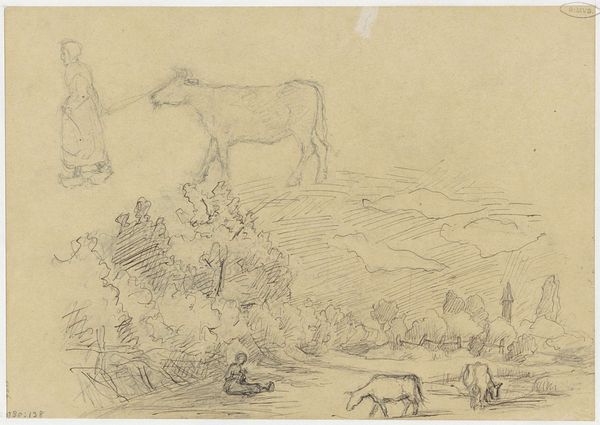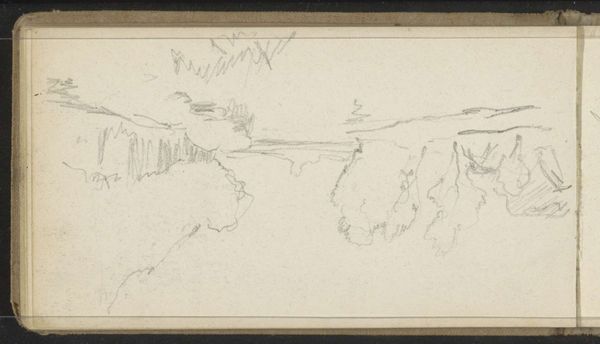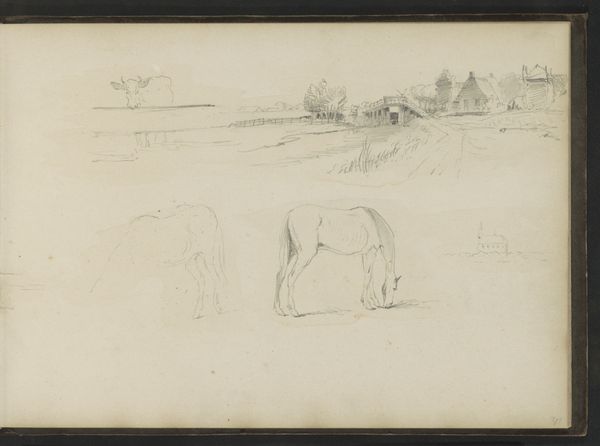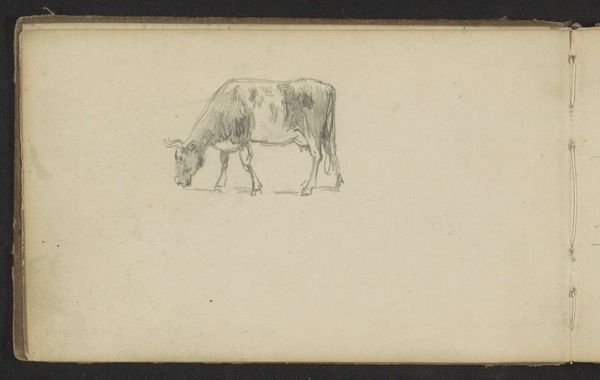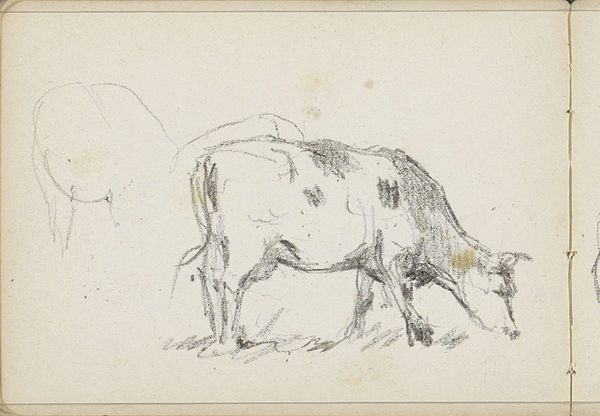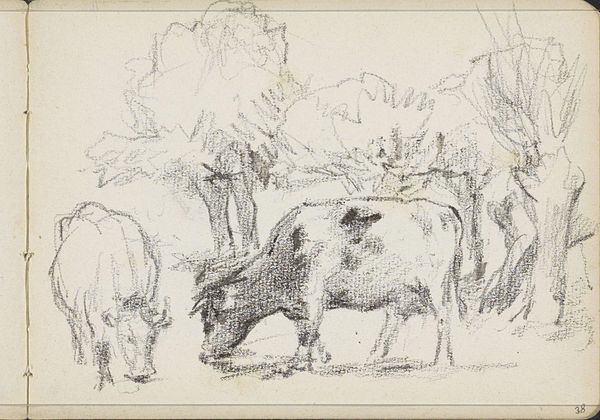
drawing, pencil
#
drawing
#
landscape
#
figuration
#
pencil
#
realism
Copyright: Rijks Museum: Open Domain
Editor: We’re looking at "Trees along a canal and a cow," a pencil drawing by Johan Hendrik Weissenbruch, dating roughly from 1834 to 1903. It's currently housed at the Rijksmuseum. It feels like a quick sketch, almost fleeting, capturing a peaceful countryside moment. What do you see in this piece? Curator: It speaks to the rise of landscape art and its connection to national identity. In the 19th century, depicting the Dutch landscape became a way of asserting cultural pride. How does this unassuming sketch engage with the broader public's perception and idealization of rural life? Editor: I hadn’t considered that! It's a very simple drawing. Curator: Exactly. And simplicity, or rather, the *illusion* of simplicity, plays a key role. Weissenbruch presents an apparently unfiltered view of nature, but consider how this image would circulate, be displayed. Who was the intended audience and what sort of values did images like these reinforce about Dutch identity? Editor: So, even this sketch has a purpose beyond just recording a scene? Curator: Precisely. The artist is very deliberate. How does the positioning of the cow and the trees, for instance, guide the viewer’s eye? Does it romanticize farm life in any way, shape, or form? The art world is not absent of societal pressures and beliefs. Editor: It's definitely making me rethink what seems like a simple pastoral scene, in the sense that even in its unpretentiousness, there is purpose. Thanks! Curator: It is, and thinking about it through the lens of its historical reception shows us how deeply intertwined art is with social values.
Comments
No comments
Be the first to comment and join the conversation on the ultimate creative platform.
